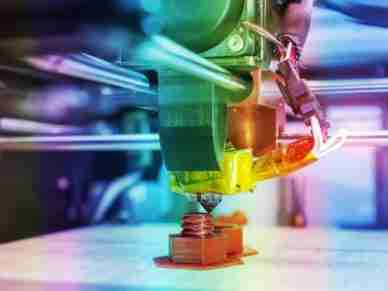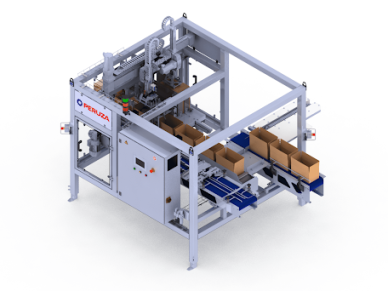Advances in bioplastics cut down on forever chemicals

You don’t have to look far to see plastics in everyday life. They’re everywhere, especially wrapped around products you purchase either in stores or online. When we unwrap those items, any of us dutifully place them in the recycling bin. We dust off our hands and consider our good deed done for the day. But of the virgin plastics in use, less than 10% ever gets recycled. Instead, many plastics will sit in landfills or oceans, taking hundreds of years or more to biodegrade. That’s why scientists and startups alike have been looking for alternative to petrochemical-based plastics. Plant-based bioplastics have only a small piece of the market, around 1%. But with innovations in the field and an increased focus on sustainability in supply chains, bioplastics are growing quickly, on pace to triple their market share in the next half-decade.
A Luxury for Now

As is often the case with fledgling technologies, bioplastics cost a lot more to make than their fossil fuel-based counterparts, somewhere in the range of 50 to 80%, the Wall Street Journal reports.
Some companies are recognizing that the investment in bioplastics could pay off in the long run as they win over or retain customers who want to buy from sustainable brands. Some of them, like LVMH, have the money to spare. The luxury conglomerate has partnered with Dow to use biobased and circular plastics in perfume packaging.
“At LVMH, with our Life 360 program, we made the decision that our packaging will contain zero plastic from virgin fossil resources in the near future,” Claude Martinez, executive president and managing director of LVMH Beauty, said. “Collaborating with Dow in developing sustainable Surlyn is key as this material is used in some of our iconic perfumes, starting with GUERLAIN La Petite Robe Noire. It is helping LVMH achieve our sustainability targets without any compromise on quality.”
As part of its drive to be net zero by 2030, Crocs has also teamed with Dow to make its clogs from bio-based Croslite, a proprietary resin material made from ethylene-vinyl acetate. Apparel giant Lululemon debuted plant-based nylon shirts this year and plans for most of its clothing to use the biomaterial by 2030.
“This definitely is a critical, vital area for us,” Esther Speck, Lululemon senior vice president for global sustainable business and impact, told the WSJ. “The opportunity to scale really is with biomaterials.”
Scaling and bringing down cost for bioplastics will be easier with government investment, which has already begun in the U.S., with the Department of Defense earmarking $1.2 billion for biomanufacturing.
Eat Your Plates

Another challenge for bioplastics is that only around half of them are biodegradable, according to the researchers at nova-Institute, which focuses on the transition of the chemical and material industry.
One sector of the burgeoning industry that’s doing well in that area is tableware. Loliware came into the public consciousness thanks to an appearance on “Shark Tank,” where founder Chelsea Briganti showed off the company’s “biodegredible” seaweed-based cups. Loliware products are no longer edible, but they still degrade in seawater in a matter of weeks. The company sources fast-growing kelp and red algae from seaweed farms and turns them into its proprietary SEA Tech resins. Loliware has partnered with José Andrés Group to supply tableware to the renowned chef’s restaurants across the U.S.
PlantSwitch has secured $17.5 million in funding and will be producing 50 million-plus pounds of bioplastics each year at its bioplastic processing facility. Companies such as Sysco and US Foods have converted over to using PlantSwitch bioplastics for all of their brands.
Founded in 2021, Uuvipak does make edible tableware from upcycled food manufacturing waste. The process keeps that waste from being burned and releasing harmful methane into the air, and Uuvipak’s cups, plates, and bowls are compostable.
While many of us enjoy our morning coffee, we might enjoy it more if the cup we drank it out of tasted like chocolate or vanilla and was completely edible, but strong enough to last as long as it took to finish the last sip. New Zealand’s Twiice makes them, out of flour, sugar, water, vanilla, and coconut oil.
“We throw away somewhere in the region of 3 billion single-use cups around the world … so the idea of Twiice is a fun alternative,” co-founder Jamie Cashmore told Radio New Zealand.
Twiice cups were featured at Roasting Plant UK in the Selfridges London food hall last year, and the company is making inroads there.
“There’s massive opportunites for a product like this in UK and Europe, where governments are forcing a lot of companies out of single-use,” Cashmore said. “The manufacturers are ready to go, and the distributors are ready.”
New Discoveries

The work continues at universities and research institutes such as Michigan State’s School of Packaging, where Rafael Auras and his team announced the creation of a compostable bio-based polymer using polylactic acid. Though the material typically requires industrial composters to break down, the team introduced a thermoplastic starch that enable microbes to digest the bioplastics more easily.
“We can reduce the amount that goes into a landfill,” Auras said.
The Michigan State announcement came soon after University of Washington researchers unveiled their home-compostable bioplastics made from blue-green cyanobacteria.
“The bioplastics we have developed, using only spirulina, not only have a degradation profile similar to organic waste, but also are on average 10 times stronger and stiffer than previously reported spirulina bioplastics,” Eleftheria Roumeli, UW assistant professor of materials science and engineering, said. “These properties open up new possibilities for the practical application of spirulina-based plastics in various industries, including disposable food packaging or household plastics, such as bottles or trays.”
As we find more uses for biodegradable bioplastics, their share of the market will continue to grow and the products we buy will come in a more sustainable package.















Leave a Reply